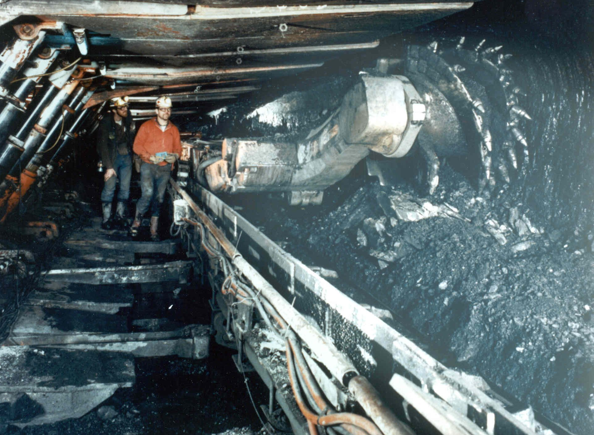BLACKSBURG, Va. – Three researchers here at Virginia Tech University are just beginning a five-year project, funded by a $1.25 million grant from the National Institute for Occupational Safety and Health, to explore the use of laser scanning and other new technologies in increasing mine safety.
Along the way, said Erik Westman, principal investigator on the project and an associate professor of mining and minerals engineering at Virginia Tech, they hope to also learn more about attracting new, young talent to the mining industry as Westman’s two collaborators and graduate students, Mario Karfakis and Michael Karmis, learn to apply these new technologies.
“There’s a shortage of people who understand coal-mine rock mechanics,” Westman said in an interview with SPAR 3D. “Our goal is to educate graduate students, give them a broad understanding and give them careers in keeping people safe.” He said the lack of professionals in the field lately has made it increasingly easy for those graduating with just a bachelor’s degree to move directly into meaningful employment, which has cut down on the number of graduate students and researchers studying the field.
See our report from last week on the increasing use of laser scanning in the mining industry.
Virginia Tech doesn’t currently have a laser scanner, so one of the project’s first tasks is actually purchasing a piece of equipment and learning to use it and accompanying point cloud processing software. Westman said VT is leaning toward a FARO Focus3D, largely because of the price tag and portability.
“The plan,” he said, “is to do some periodic scanning and see if we can identify roof sag. Old miners would use a bow and some string and see if the string became slack – we’ll see if we can demonstrate better results with the newer technology.” Statistics kept by the U.S. Department of Labor’s Mine Safety and Health Administration show that 16 percent of fatalities and lost time in the underground mining industry are due to unexpected rock mass failure.”
Westman did say they’d also be exploring the explosion-proof scanner made by Z+F, as the coal dust underground in active mines makes the use of a scanner with ventilation impossible in certain areas.
Will real commercial companies embrace the use of this new technology, though? Westman said some mining firms are more progressive than others. “Some companies wait and see if new technology is successful,” he said, “then they’re go and incorporate it. Some jump out on the leading edge. But, generally, a lot of the equipment underground has come a long way in the last 20 years.”
Both this grant, and some companies’ embracing of new technology, has been spurred by high-profile disasters in recent years. In the request for proposals for this grant, it said right up front that it was a response to the Upper Big Branch disaster, and “it’s clear that the industry is losing a lot of expertise through retirement,” Westman said, “and we need a new cadre of professionals.”
Other technologies included as part of the grant include wireless data transmission and microseismic tomography for improved understanding and quantification of rock mass response. Westman said to expect results to begin coming out of the project in year four.






